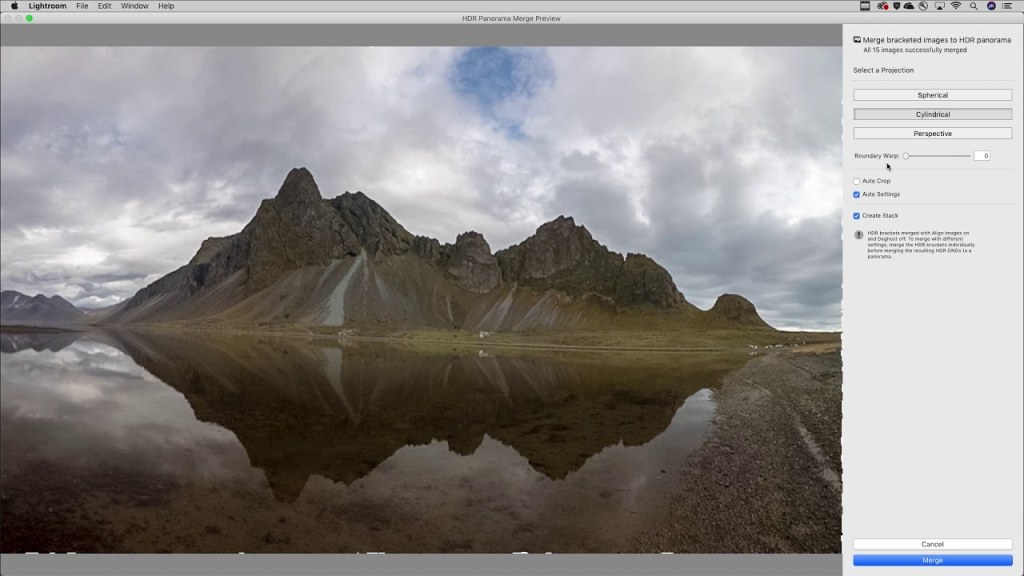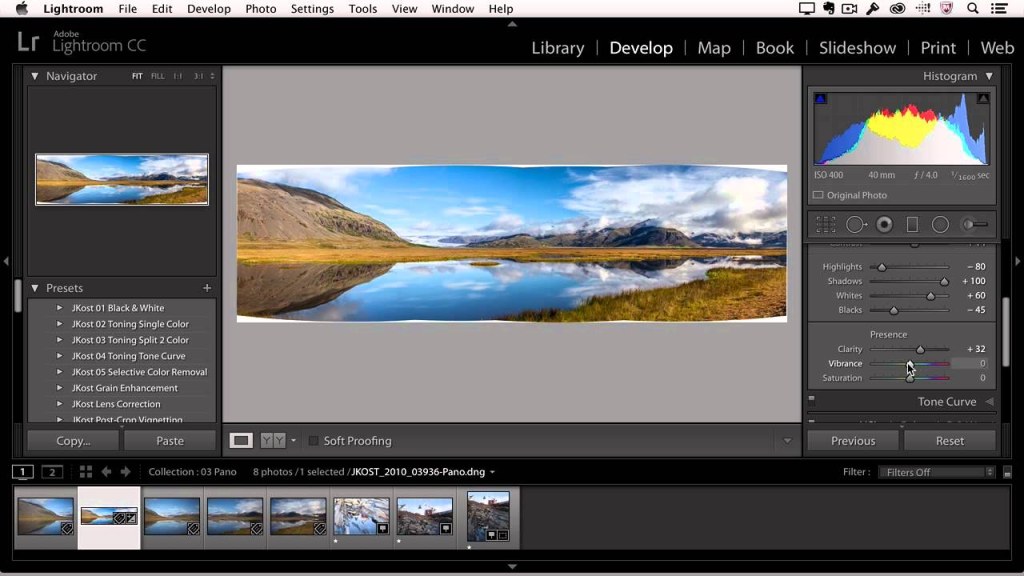Enhance Your Panoramas In Lightroom: Unleash The Power Of Stunning Visuals With A Click!
Panorama in Lightroom: Enhancing Your Photography Experience
Greetings, Happy People! Today, we are going to dive into the world of panorama photography in Lightroom. Panorama photography allows you to capture breathtaking wide-angle views, expanding the boundaries of your images. In this article, we will explore the ins and outs of panorama in Lightroom, providing you with valuable insights and tips to take your photography skills to the next level.
Introduction
1. What is Panorama in Lightroom?
2 Picture Gallery: Enhance Your Panoramas In Lightroom: Unleash The Power Of Stunning Visuals With A Click!
2. Why Should You Use Panorama in Lightroom?

Image Source: ytimg.com
3. Who Can Benefit from Panorama Photography?
4. When and Where to Use Panorama in Lightroom?

Image Source: ytimg.com
5. How Does Panorama in Lightroom Work?
6. Common Misconceptions about Panorama Photography
7. Key Features and Tools in Lightroom for Panorama Editing
What is Panorama in Lightroom? 🌄
Panorama photography is a technique that allows you to capture wide-angle views by stitching together multiple images. Adobe Lightroom, a popular photo editing software, offers powerful tools and features to seamlessly merge and enhance panorama shots. With Lightroom’s panorama functionality, you can create stunning and realistic panoramic images that showcase the grandeur of landscapes, architecture, and other subjects.
Creating a Panorama in Lightroom
The process of creating a panorama in Lightroom involves a few simple steps. First, you need to capture a series of overlapping images while panning your camera. Once you have your images, import them into Lightroom, select them all, and right-click to choose the Photo Merge option. From the dropdown menu, select Panorama and let Lightroom work its magic. It will automatically stitch the images together, aligning them perfectly to create a seamless panorama.
Enhancing Your Panorama Shots
Lightroom offers a wide range of editing tools to enhance your panorama shots. You can adjust exposure, contrast, highlights, shadows, and colors to bring out the best in your images. Additionally, you can apply lens corrections, straighten horizons, and crop the panorama to remove any unwanted elements. With Lightroom’s powerful editing capabilities, you have full control over the final look of your panorama.
Exporting and Sharing Your Panorama
Once you have edited your panorama to perfection, it’s time to export and share your masterpiece. Lightroom allows you to export your panorama in various file formats, such as JPEG or TIFF, with customizable settings for resolution, compression, and metadata. You can then easily share your panorama on social media, websites, or even print it out for display.
Why Should You Use Panorama in Lightroom? 📸
Panorama photography offers unique advantages that can elevate your photography game. Here are some reasons why you should consider using panorama in Lightroom:
1. Capturing Vast Landscapes
With panorama photography, you can capture the vastness and beauty of landscapes that cannot be fully encompassed in a single frame. Whether it’s a majestic mountain range or a serene beach, panorama shots allow you to convey the true scale and grandeur of the scene.
2. Creating Dramatic and Dynamic Images
By stretching the dimensions of your images, panoramas add a sense of drama and dynamism. The elongated frame creates a visually striking composition, pulling the viewer into the scene and making them feel immersed in the environment.
3. Showcasing Architectural Marvels
Architectural photography often requires capturing the full magnitude of a building or structure. Panorama shots enable you to showcase the intricate details and grand architecture of landmarks, skyscrapers, or historical sites, providing a comprehensive view that a single shot cannot capture.
4. Stand Out on Social Media
In a world where attention spans are short, panorama images stand out on social media platforms. Their wide format and immersive nature grab the viewer’s attention, making your photos more likely to be noticed, liked, and shared.
5. Expressing Unique Perspectives
With panorama photography, you have the freedom to experiment with unique perspectives. By exploring different angles and viewpoints, you can create images that offer fresh and captivating interpretations of familiar scenes.
Who Can Benefit from Panorama Photography? 📷
Panorama photography is not limited to a specific group of photographers. Whether you are a professional or an amateur, panorama in Lightroom can elevate your photography skills and enhance your portfolio. Here are some groups of individuals who can benefit from panorama photography:
1. Landscape Photographers
Landscape photographers, in particular, can greatly benefit from panorama photography. It allows them to capture the vastness and beauty of the natural world, creating breathtaking images that evoke emotions and showcase the wonders of our planet.
2. Travel Enthusiasts
If you love to explore new destinations and document your travels, panorama photography is a must-try. It enables you to encapsulate the essence of a place, preserving the memories and allowing you to share your adventures with others.
3. Real Estate Professionals
For real estate professionals, panorama shots are a powerful tool to showcase properties. By capturing wide-angle views, you can provide potential buyers with an immersive experience, highlighting the unique selling points of each listing.
4. Architecture and Interior Photographers
Architectural and interior photographers can benefit from panorama photography to capture the full scale and intricate details of structures. It enables them to present their work in a visually appealing and comprehensive manner.
5. Photography Enthusiasts
Even if you are simply a photography enthusiast looking to expand your creative horizons, panorama photography can open up new possibilities. It allows you to experiment with different techniques, push your boundaries, and unlock your full potential as a photographer.
When and Where to Use Panorama in Lightroom? 🌍
Knowing when and where to use panorama in Lightroom can help you capture stunning images that leave a lasting impression. Here are some scenarios where panorama photography can be particularly effective:
1. Expansive Natural Landscapes
When you come across breathtaking natural landscapes, panorama photography can help you capture the vastness and beauty that lies before you. Whether it’s the rolling hills, a cascading waterfall, or a serene sunset over the ocean, panorama shots can convey the grandeur of these scenes.
2. Urban Cityscapes
Cityscapes often exhibit stunning architecture and a blend of vibrant colors. Panorama photography allows you to capture the entire city skyline or the unique features of a cityscape, such as bridges, landmarks, or bustling streets.
3. Interior Spaces
When photographing interiors, panorama shots can showcase the spaciousness and design elements of a room. Whether it’s a luxurious hotel lobby, a cozy living room, or an ornate cathedral, panorama photography can ensure that no detail goes unnoticed.
4. Events and Gatherings
Group photos and crowded events can benefit from panorama photography. By capturing a wide-angle view, you can include all the participants, ensuring that everyone is part of the memory.
5. Adventure and Exploration
When embarking on an adventure or exploring new places, panorama photography can be your best companion. It allows you to capture panoramic views from mountaintops, picturesque trails, or hidden gems, preserving the memories of your journeys.
How Does Panorama in Lightroom Work? 🖥️
Lightroom’s panorama functionality works by intelligently stitching together multiple images to create a seamless panorama. Here’s a step-by-step breakdown of how panorama in Lightroom works:
1. Capturing Overlapping Images
To create a panorama in Lightroom, you need to capture a series of overlapping images. Make sure to maintain a consistent exposure and focus throughout the sequence. The more overlap you have between the images, the better the stitching process will be.
2. Importing Images into Lightroom
Once you have captured your images, import them into Lightroom by selecting the Import option. Choose the folder where your images are stored and select the files you want to work with. Lightroom will then import the images into its library for further editing.
3. Selecting and Merging Images
In the Library module, select all the images you want to use for your panorama. Right-click on the selection and choose the Photo Merge option from the dropdown menu. Select Panorama from the submenu that appears, and Lightroom will start analyzing and merging the images.
4. Stitching and Aligning Images
Lightroom will automatically stitch the images together, aligning them based on common elements and patterns. It will analyze the content and adjust the positioning, perspective, and distortion to create a seamless panorama.
5. Editing the Panorama
Once the panorama is merged, Lightroom will generate a new DNG file, allowing you to make further adjustments and edits. You can use Lightroom’s editing tools to enhance the exposure, contrast, colors, and other parameters to achieve your desired look.
6. Fine-Tuning the Panorama
If the panorama requires any fine-tuning, such as cropping, straightening horizons, or applying lens corrections, Lightroom provides dedicated tools to help you achieve precise adjustments. These tools ensure that your panorama looks polished and professional.
7. Exporting the Panorama
Once you are satisfied with your edits, it’s time to export your panorama. Lightroom allows you to choose the file format, resolution, compression settings, and other parameters based on your intended use. You can then export the panorama and share it with the world.
Common Misconceptions about Panorama Photography 🌅
Despite its popularity, panorama photography is often surrounded by some common misconceptions. Let’s debunk these myths and clarify the facts:
1. Panoramas are Only for Wide Landscapes
While panorama photography is often used for capturing wide landscapes, its applications are not limited to that. Panoramas can be used to photograph architecture, interior spaces, cityscapes, and even events. It’s a versatile technique that can add depth and impact to various subjects.
2. Panoramas are Difficult to Capture
With modern cameras and software like Lightroom, capturing panoramas has become easier than ever. The process is straightforward, and the software does most of the work for you. With a little practice and experimentation, you can master panorama photography in no time.
3. Panoramas Require Special Equipment
While specialized gear, such as a wide-angle lens, can be beneficial for panorama photography, it is not a requirement. You can capture stunning panoramas using any camera and lens combination. The key is to capture overlapping images and use software like Lightroom to stitch them together.
4. Panoramas are Only for Professionals
Panoramas can be enjoyed by photographers of all skill levels. Whether you are a professional or a hobbyist, panorama photography offers a creative outlet and allows you to push the boundaries of your photography. Don’t be afraid to experiment and have fun with this technique.
5. Panoramas are Inherently Unrealistic
While panoramas do offer a wider field of view, they can still represent the scene in a realistic and accurate manner. With the right technique and careful editing, you can create panoramas that appear natural and true to life. The goal is to enhance the viewer’s experience, not distort reality.
Advantages and Disadvantages of Panorama in Lightroom 📊
As with any photography technique, panorama in Lightroom has its own set of advantages and disadvantages. Let’s explore both sides to help you make an informed decision:
Advantages of Panorama in Lightroom
1. Enhanced Composition: Panoramas offer a unique compositional style that can be visually striking and captivating.
2. Wide-Angle Views: Panoramas allow you to capture wide-angle views that cannot be encompassed in a single frame.
3. Increased Image Resolution: By merging multiple images, panoramas can result in higher resolution and finer details.
4. Immersive Experience: Panoramas create an immersive viewing experience, making the viewer feel like they are part of the scene.
5. Stand Out on Social Media: Panoramas grab attention on social media platforms, increasing the chances of engagement and exposure.
Disadvantages of Panorama in Lightroom
1. Processing Time: Merging and editing panoramas can be time-consuming, especially for large files or complex scenes.
2. Increased File Size: Panoramas often result in larger file sizes, requiring more storage space on your computer or storage device.
3. Distortion and Stitching Errors: In some cases, panoramas may exhibit minor distortions or stitching errors, requiring additional editing to correct.
4. Limited Field of
This post topic: Panorama

